#harry benshoff
Explore tagged Tumblr posts
Text

“The way homosexuality enters the genre is through subtextual or connotative avenues.”

“Homosexuality onscreen has been more or less allusive: it lurks around the edges of texts and characters rather than announcing itself forthrightly.”

“Homosexuality becomes a subtle but undoubtedly present signifier that usually serves to characterize the villain or monster."

"Pilot" (Yellowjackets dir. Karyn Kusama) and "The Monster and the Homosexual" (an essay by Harry Benshoff)
Yellowjackets + Monster Theory 3/?
#yellowjackets#yellowjackets edit#my yellowjackets edit#shauna shipman#jackie taylor#jeff sadecki#shaunajackie#shauna x jackie#jackie x shauna#jackieshauna#monster theory#the monster and the homosexual#harry benshoff#yellowjackets + monster theory
30 notes
·
View notes
Quote
In a 1984 study of anti-homosexual attitudes, the investigators broke heterosexuals' fears of gay and lesbian sexuality into three topic areas: (1) Homosexuality as a threat to the individual - that someone you know (or you yourself) might be homosexual. (2) Homosexuality as a threat to others - homosexuals have been frequently linked in the media to child molestation, rape, and violence. (3) Homosexuality as a threat to the community and other components of culture - homosexuals supposedly represent the destruction of the procreative nuclear family, traditional gender roles, and (to use a buzz phrase) "family values." In short, for many people in our shared English-language culture, homosexuality is a monstrous condition.
Monsters In The Closet (Harry M Benshoff, 1997)
30 notes
·
View notes
Text
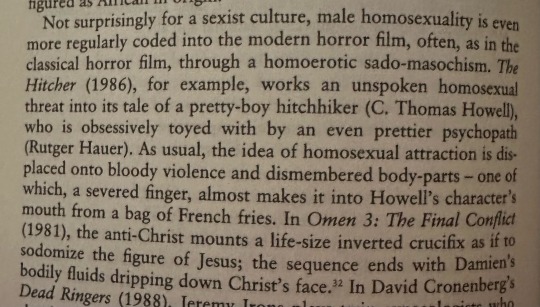
Monsters in the Closet: Homosexuality and the horror film by Harry M. Benshoff
#an even prettier psychopath (rutger hauer)#monsters in the closet#Harry m. Benshoff#lit#gay subtext#the hitcher#omen iii: the final conflict
140 notes
·
View notes
Text
30 Days of Literary Pride 2023 - June 6

Monsters in the Closet: Homosexuality and the Horror Film - Harry M. Benshoff
2 notes
·
View notes
Text
Broaden Your Horizons 2024
A Non-Fiction Rec List by Salvadorbonaparte
Books
Adventures in Yiddishland: Postvernacular Language and Culture - Jeffrey Shandler
A Good Man in Evil Times: The Heroic Story of Aristides de Sousa Mendes -- The Man Who Saved the Lives of Countless Refugess in World War II - Jose-Alain Fralon, Peter Graham (trans.)
Brief Answers to the Big Questions - Stephen Hawking
Erebus: The Story of a Ship - Michael Palin
Every Word Is A Bird We Teach To Sing: Encounters with the Mysteries and Meanings of Language - Daniel Tammet
Federico Garcia Lorca: A Life - Ian Gibson
Getting to Yes: Negotiating an agreement without giving in - Roger Fisher, William Ury
I Am Malala: The Girl Who Stood Up for Education and Was Shot by the Taliban - Malala Yousafzai
Ice Ghosts: The Epic Hunt for the Lost Franklin Expedition - Paul Watson
Identity and Violence: The Illusion of Destiny - Amartya Sen
If I Understood You, Would I Have This Look on My Face?: My Adventures in the Art and Science of Relating and Communicating - Alan Alda
Imagined Communities: Reflections on the Origin and Spread of Nationalism
Iw��gara: American Indian Ethnobotanical Traditions and Science
Lingo: A Language Spotter's Guide to Europe - Gaston Dorren, Alison Edwards (trans.)
Monsters in the Closet: Homosexuality and the Horror Film - Harry M. Benshoff
One River: Explorations and Discoveries in the Amazon Rainforest - Wade Davis
Watching the English: The Hidden Rules of English Behaviour - Kate Fox
What's Your Pronoun? Beyond He and She - Dennis Baron
Documentaries
Bowling for Columbine
Break It All: The History of Rock in Latin America
ReMastered: Tricky Dick and the Man in Black
She's Beautiful When She's Angry
Street Gang: How We Got to Sesame Street
Podcasts
Clear+Vivid with Alan Alda
Freaks and Psychos: The Disability in Horror Podcast
Lingthusiasm
Ologies with Alie Ward
Root of Evil: The True Story of the Hodel Family and the Black Dahlia
The Sewers of Paris
#non fiction#nonfiction#book recs#podcasts#documentaries#documentary#podcast recs#book recommendations#podcast recommendations#rec list
140 notes
·
View notes
Text
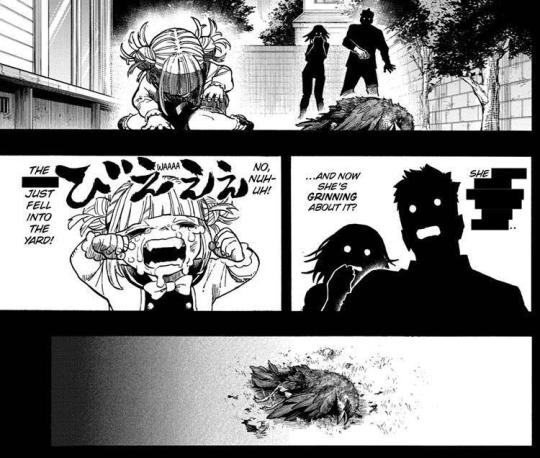
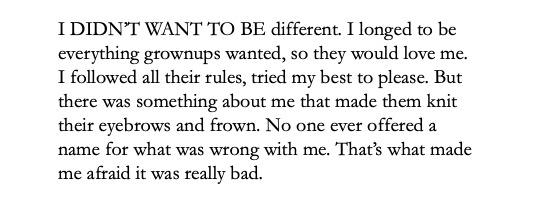








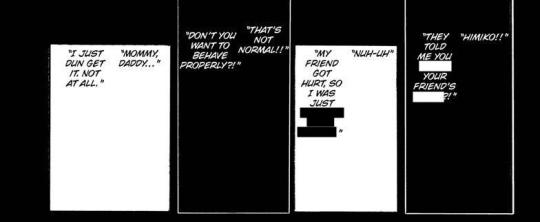


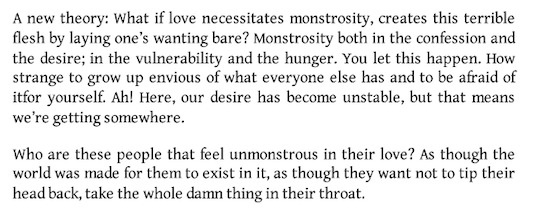
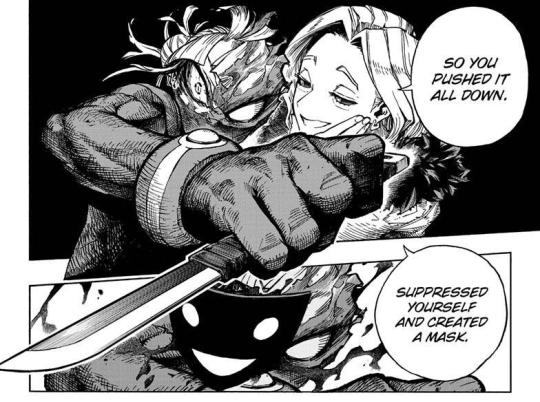

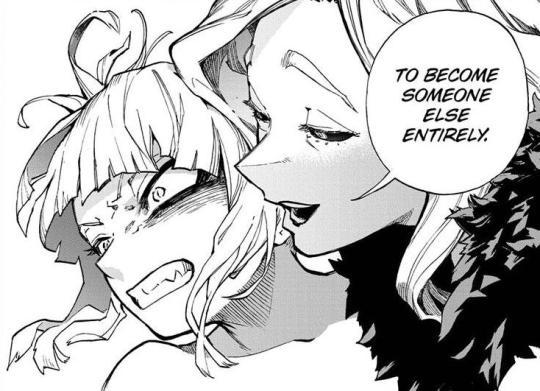

My Hero Academia ch. 392 | Stone Butch Blues, Leslie Feinberg | On Being a "Lesbian", Kakefuda Hiroko trans. Indiana Scarlet Brown | Monsters in the Closet: Homosexuality and the Horror Film, Harry M. Benshoff | Why be Happy When You Could be Normal?, Jeanette Winterson | Disobedience, Naomi Alderman | The Well of Loneliness, Radclyffe Hall | "A Working Definition of the Monstrous," Ryan Dzelzkalns in It Came from the Closet: Queer Reflections on Horror | Notes of a Crocodile, Qiu Miaojin | "For Friendship, Perhaps," Revolutionary Girl Utena
180 notes
·
View notes
Text

Monsters in the Closet: Homosexuality and the Horror Film // Harry M. Benshoff // pg. 12
23 notes
·
View notes
Text
Different From the Others (1919)

Directed by Richard Oswald
Starring: Conrad Veidt, Rheinhold Schüznel, Magnus Hirschfekd.
youtube
Different From The Others is the first openly gay film to be made - ever. Its influence can still be felt in film today as it rallies against discriminatory laws against gay individuals and advocated for acceptance in society.
Only partially salvaged from time, Different From The Others’ legacy held a candle for all of those who came after it in history. Being made as a reaction to Paragraph 175, Germany’s law against homosexuality, this film is the first of its kind to ever be made. While not the first movie made by queer or LGBTQ+ artists, it is the first to have a positive portrayal of gay individuals in a motion picture. That, alongside explicitly gay characters and their romance as a main aspect for the plot.

Different made a strong impact in Germany upon its initial release. Causing outrage and sparking support, many of those critiquing the film were disgusted it was ever allowed to be released, despite coming out during a time when Paragraph 175 was not being enforced and LGBTQ+ films were released without legal action being taken against the filmmakers.
This film is included on this list about American silent film due to its influence and impact on the Hollywood film scene . Specifically, on LGBTQ+ filmmakers or actors who wanted to express themselves more freely in their chosen medium of film. When it comes to the films influenced by Different From the Others, Salome and The Pleasure Garden are two of the American films that spawned from Different. Even throughout the 20th century, films such as Victim lifted their plot from Different From The Others, songs were inspired by the film, as well as documentaries detailing the legacy the film left behind.
Notes and References:
Benshoff, Harry M., Griffin, Sean, Queer Images : A History of Gay and Lesbian Film in America, (Blue Ridge, Summit: Rowman & Littlefield Publishers, Incorporated, 2005)
Malakaj, Ervin, "Richard Oswald, Magnus Hirschfeld, and the Possible Impossibility of Hygienic Melodrama", Studies in European Cinema vol 14 no 3 (2017), 216–230.
15 notes
·
View notes
Text
“The teaming of Boris Karloff and Bela Lugosi in the mid-1930s in a series of horror vehicles furthered the concept of a monstrously queer sado-masochistic male couple. This type of queer couple, unlike their domestic counterparts, was not interested in creating life together but rather in torturing one another to death.”
- Harry Benshoff, Monsters in the Closet: Homosexuality and the Horror Film
8 notes
·
View notes
Text
“But it is also precisely this type of connotation (conscious or otherwise) which allows and fosters the multiplicity of various readings and reading positions, including what has been called active queer (or gay, or lesbian) reading practices. If we adopt Roland Barthes’s model of signification wherein the denotative meaning of any signifier is simply the first of many possible meanings along a connotative chain, then we can readily acknowledge that a multitude of spectators, some queer, some not, will each understand the ‘denotative’ events of a visual narrative in different ways. For Doty, then, there is the (fourth) sense that any film viewed by a gay or lesbian spectator might be considered queer. The queer spectator’s ‘gay-dar,’ already attuned to the possible discovery of homosexuality within culture-at-large, here functions in relation to specific cultural artifacts. As such, ‘Queer readings aren’t “alternative” readings, wishful or willful misreadings, or “reading too much into things” readings. They result from the recognition and articulation of the complex range of queerness that has been in popular culture texts and their audiences all along.’ In the case of horror films and monster movies, this ‘complex range of queerness’ circulates through and around the figure of the monster, and in his/her relation to normality.”
Monsters in the Closet: Homosexuality and the Horror Film, Harry M. Benshoff, 1997.
#just the introduction of this book has made me insane can't believe i'm going to read the whole thing FOR CLASS#queer#horror#queer horror#film analysis#link is to a pdf of the book <3 mwah
39 notes
·
View notes
Note
do you have a reading list from the syllabus you can share 😳?
Robin Wood - American Nightmare
Paul Oflinn - Production and Reproduction: The Case of Frankenstein
Harry M Benshoff - The Monster and the Homosexual
Linda Williams - Film Bodies: Gender, Genre, and Excess
Linda Williams - When the Woman Looks
Carol J Clover - Her Body, Himself
Barbara Creed - Horror and the Monstrous Feminine
Eric King Watts - Postracial Fantasies, Blackness, and Zombies
3 notes
·
View notes
Text



“Society cannot be formed or continue to exist without a certain amount of basic repression."


“Foucalt noted of ‘repression’ that ‘there is not one but many silences.'"



"Burial" (Yellowjackets dir. Anya Adams) and "The Monster and the Homosexual" (an essay by Harry Benshoff)
Yellowjackets + Monster Theory 6/?
#yellowjackets#yellowjackets edit#my yellowjackets edit#shauna shipman#van palmer#taissa turner#lottie matthews#nat scatorccio#natalie scatorccio#monster theory#the monster and the homosexual#harry benshoff#yellowjackets + monster theory
26 notes
·
View notes
Text
started reading harry benshoff’s monsters in the closet. the dovetailing of queer studies and horror studies you will always be famous to me
3 notes
·
View notes
Text
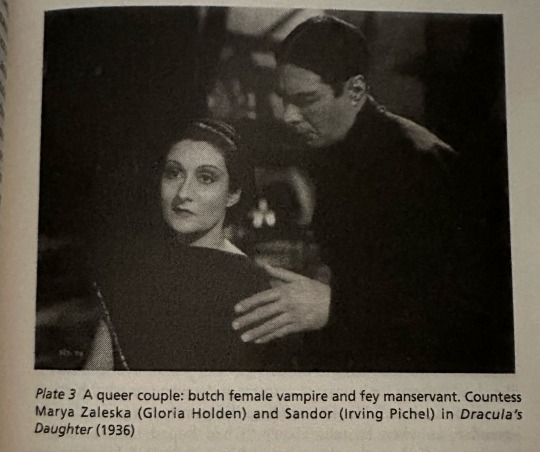
Me and who
111 notes
·
View notes
Text
Post 5: Queer Representation and Queer-Baiting through Queer Horror in Jennifer's Body
The film Jennifer’s Body is not only praised for its feminist undertones in today’s society, but it is also seen as a movie that uses queer baiting as well. Before there can be any further discussion regarding how the film uses queer baiting, there must be discussion done regarding how queer individuals are represented and used in horror films. According to Harry Benshoff, homosexuality is defined as the following points:
1. Homosexuality as a threat to the individual that someone you know or you yourself might be homosexual
2. Homoesexuality as a threat to others - homosexual have been frequently linked in the media to child molestation, rape, and violence
3. Homoesexuality as a threat to the community and other components of culture - homosexuals supposedly represent the destruction of the procreative nuclear family, traditional gender roles, and “family values” (91).
When taking this all into consideration, one can see how queer individuals are specifically used to enact horror through the disruption of the norm and as acting as the abject. When gayness does occur in films, it is not there to be expressed by itself. Rather it is being used to express thoughts about sexuality that is understood in the heteronormative instead. It brings light to how homosexuality is thought and taught by heterosexuals, which the culture will then teach one to see how they feel and think about their heterosexuality overall. Now in terms of the film, it is considered to be a queer awakening for many, even with its usage of queer baiting through the relationship of Needy and Jennifer. According to Olivia McCormack, a reporter at the Washington Post, discusses in their article about how upon the film’s initial release, “the dialogue was considered campy” and the “marketed audience of teenage boys did not care for the queer-coded friendship and allegory about sexual violence.”Although the film does queer bait, there are many individuals that felt as if their sexualities were represented very well in the film, even if neither main character was explicitly marked as a queer individual. The queer themes in the film were not very well discussed until fairly recently with many internet hashtags trending, like the #MeToo tag. Besides the representation of queer individuals, the film is still taking queer folks and portraying them as monstrous beings. According to Ashlynn Harman, the homoerotic scene between Needy and Jennifer has many overarching themes of patriarchy and queer representation overall. The reason why the film is so popular in queer spaces is because of the film’s rejection of the heteronormative and female faze (Harman). This brings the idea of how gender and queer identity are playing a role within creating horror that allows for one to play with the abject overall. The film helps create a theme that heteronormativity is not one ideology, but a concept by creating horror through the relationship of a heterosexual patriarchal capitalism and the Other, embodied in the figure of a monster. Jennifer is considered to be this man eating monster that is working against the male gaze of a heterosexual and patriarchal society. She is the monster that is marketing towards the abject.
Works Cited:
admin. “The Homoeroticism of Jennifer’s Body by Ashlynn Harman – Listen to Her UNF.” Unf.edu, 2022, lieberman.domains.unf.edu/s22/the-homoeroticism-of-jennifers-body%EF%BF%BC/.
Benshoff, Harry. “Monster and the Homosexual.” Horror The Film Reader, edited by Mark Jancovich.
““Jennifer’s Body” Has Become a Hallmark of Queer Horror. These Fans Explain Why.” Washington Post, 30 Oct. 2021, www.washingtonpost.com/gender-identity/jennifers-body-has-become-a-hallmark-of-queer-horror-these-fans-explain-why/. Accessed 12 Jan. 2024.
0 notes
Note
some 👻😱 for a rec pretty please
Of course!
Your Halloween Treat is:
11 notes
·
View notes